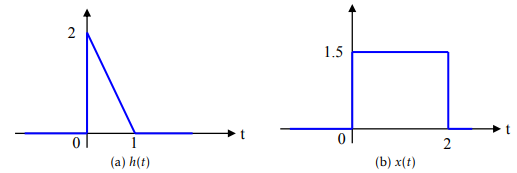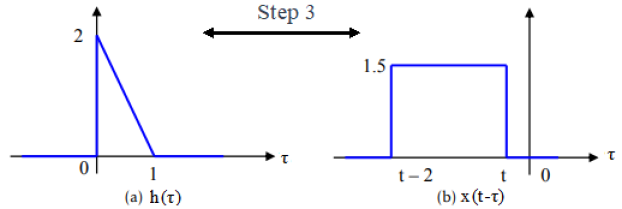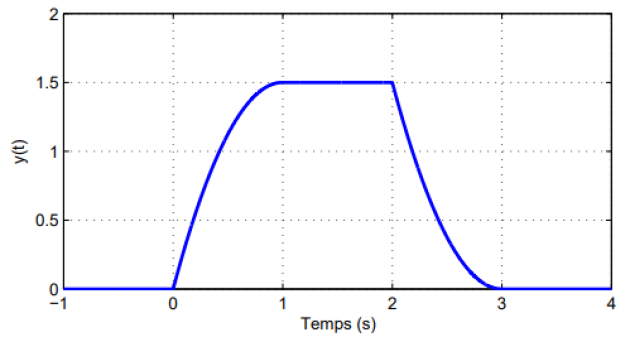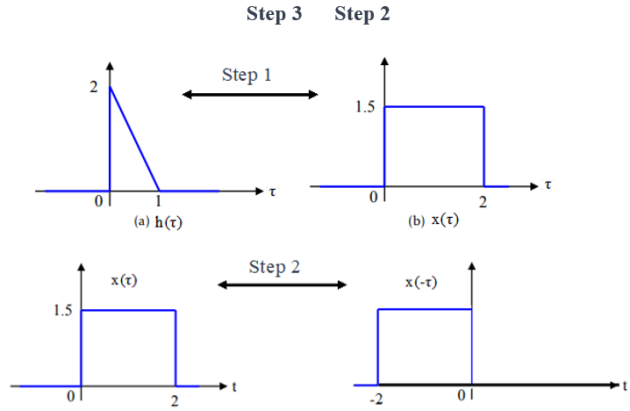Graphical convolution between two continuous-time signals f1(t) and f2(t)
Various steps and operations are involved in the convolution product:
The variable t is replaced by τ.
We consider the symmetry of f2(t) relative to the ordinate axis f2 (t) → f2 (-t).
The function f2 (-τ) is then translated to the right by an amount t: f2 (-τ) → f2 (t- τ).
The product f1(t).f2 (t- τ) are computed.
The convolution product, being a function of time t, needs to be evaluated over -∞ < t < +∞.
Example : Consider the two functions h(t) = −2t + 2 for 0 ≤ t ≤ 1 and x(t) = 1.5 for 0 ≤ t ≤ 2.

Calculate: y(t)= h(t)* x(t).

"4th and 5th step "

The calculation of the convolution is then done at intervals.
1st case : \(0 < t < 2 \implies\) \(y\left(t\right)=\int_{-\infty}^{+\infty}{h\left(\tau\right)x\left(t-\tau\right)d\tau=}\int_{0}^{t}{(-2\tau+2)(1.5)d\tau}\)
\(y\left(t\right)=3t-1.5t^2\)
2nd case : \(1 < t < 2 \implies\) \(y\left(t\right)=\int_{0}^{1}{\left(-2\tau+2\right)\left(1.5\right)d\tau=1.5}\)
3rd case : \(t > 2 \implies\) \(y\left(t\right)=\int_{t-2}^{1}{\left(-2\tau+2\right)\left(1.5\right)d\tau=1.5t^2-9t+13.5}\)
We can validate the derived equations, as the convolution yields a graph without discontinuities. The visual representation of the final result is provided in the figure below.

